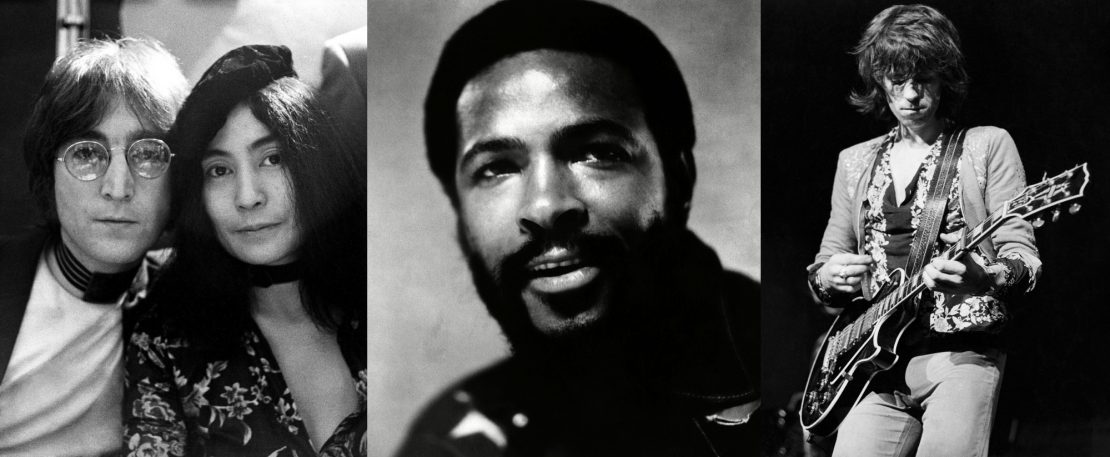
“1971: The Year That Music Changed Everything” Apple TV+ Docu-series Review by Josh Davis
June 1, 2021 8:17 am |

“This music is a dangerous music,” Bob Marley says in Apple TV+’s new documentary series “1971: The Year That Music Changed Everything.”
Consider 1971, the year. In the U.S. alone, Charles Manson is found guilty of murder and sentenced to death, the Weather Underground bombs the U.S. Capital, Joe Frazier beats Muhammad Ali, hundreds of thousands protest the Vietnam War in Washington, D.C. and San Francisco, millions more watch atrocities from the war at home on their televisions, former Beatle George Harrison leads a Concert for Bangladesh in New York, and 42 people are killed in the Attica Prison uprising.
The year in music included classic albums by John Lennon, Marvin Gaye, The Who, The Rolling Stones, Sly and the Family Stone, David Bowie, Joni Mitchell, Carly Simon, Carol King, Bill Withers, T. Rex, The Doors, Stevie Wonder, Elton John, and Curtis Mayfield, among many others.
“1971” was inspired by “Never a Dull Moment: 1971 The Year That Rock Exploded,” by British music journalist David Hepworth. The series starts with the massacre at Kent State and the sonic reaction by Crosby, Still, Nash and Young, and it ends with the transformation of David Bowie from ambitious young British musician to rock revolutionary Ziggy Stardust.
The series is executive produced by Academy, BAFTA and Grammy award winners Asif Kapadia (“Amy,” “Senna”) and James Gay-Rees (“Amy,” “Senna,” “Exit Through the Gift Shop”).
Across eight episodes, there is gorgeous music, terrible images of war and violence, and stories about change that clearly resonate 50 years later.
That’s especially true when watching Marvin Gaye, Curtis Mayfield, Aretha Franklin and others creating groundbreaking music about the inequality of the war abroad, and police brutality and racial injustice at home in the United States.
Lesser-known parts of U.S. history like the Attica Prison uprising get some much-needed screen time, especially the incarceration of George Jackson, who served a decade-long prison sentence for stealing $70.
Drug addiction and the fallout of the 1960s experimental drug culture is also present, from the shambolic sessions the led to The Rolling Stones masterpiece “Exile on Main St.,” to the exquisite bleakness of Sly and the Family Stone’s “There’s a Riot Goin’ On.”

One of the biggest strengths of the documentary is the decision to exclusively use archival footage – there are no clips of Mick Jagger in 2021 reflecting on the glory days. And that choice lets the viewer see things as they were, warts and all.
Mick Jagger, in 1971, often looks scared as hell. In one scene he’s being rushed into a helicopter to escape the tragic violence at Altamont when concertgoers were literally stabbed in front of him. In others, he’s struggling to survive drug-addled recording sessions in France while his songwriting partner Keith Richards is blacked out after shooting unspeakable amounts of heroin.
There is also fascinating footage of Sly Stone working on the layers of sound that defined the best parts of “There’s a Riot Goin’ On,” and sad and revealing clips of a strung-out Sly appearing on the Dick Cavett show in the same year. Not unlike Brian Wilson from the Beach Boys, drugs had isolated Sly, and his music changed – for better and worse – because of it.
The series also weaves in and out of the Vietnam War and the terrible, bloody images associated with it, from U.S. soldiers freely admitting they had no idea why they were there, to photographs of bodies in the streets – including infants and young children – that resulted from the conflict.
The best parts of “1971” achieve a truly visceral reaction because of the sum of those parts – images of the Vietnam War cut against John Lennon growing into a social activist and singing “Happy Xmas (War Is Over),” or Aretha Franklin drenched in sweat and singing a heart wrenching take on “Bridge Over Troubled Water” after the tragedy of George Jackson and Attica.
It’s not really clear whether music actually changed anything at all in 1971. So many of the issues then are still very, very much at the forefront today. But the best musicians of the time captured the essence of those issues, immortalized them, and put them down on recordings that have stood the test of time. And the series captures the when and why and how that helped make those songs so indelible.
“1971” doesn’t really have all the answers and it doesn’t necessarily function as a narrative from one episode to the next, but it’s a brilliant stringing together of music and images and stories from a year when the idyllic innocence of the 1960s met the harsh realities of war and violence and injustice.
It’s an experience to watch it, and it pulls the viewer in through a remarkable marriage of music and imagery and editing. If you’re unfamiliar with some of the music, it’s also great way to fall in love with new (old) sounds and, along the way, learn about the incredible history behind them.
In a more enlightened world, this is the kind of stuff that could make American history really come alive for a new generation in schools. While we’re all waiting for that to happen, the next best thing is tuning in, in the nearest living room.
PCL Rating: Tupperware
Rotten Tomatoes Rating: FRESH
Tags: 1971 the year that changed everything apple tv, 1971 the year that music changed everything 2021, docu-series, pop culture leftovers, Television Review, TV Review
Categorised in: Television Reviews
This post was written by Leftover Brian
Comments are closed here.




